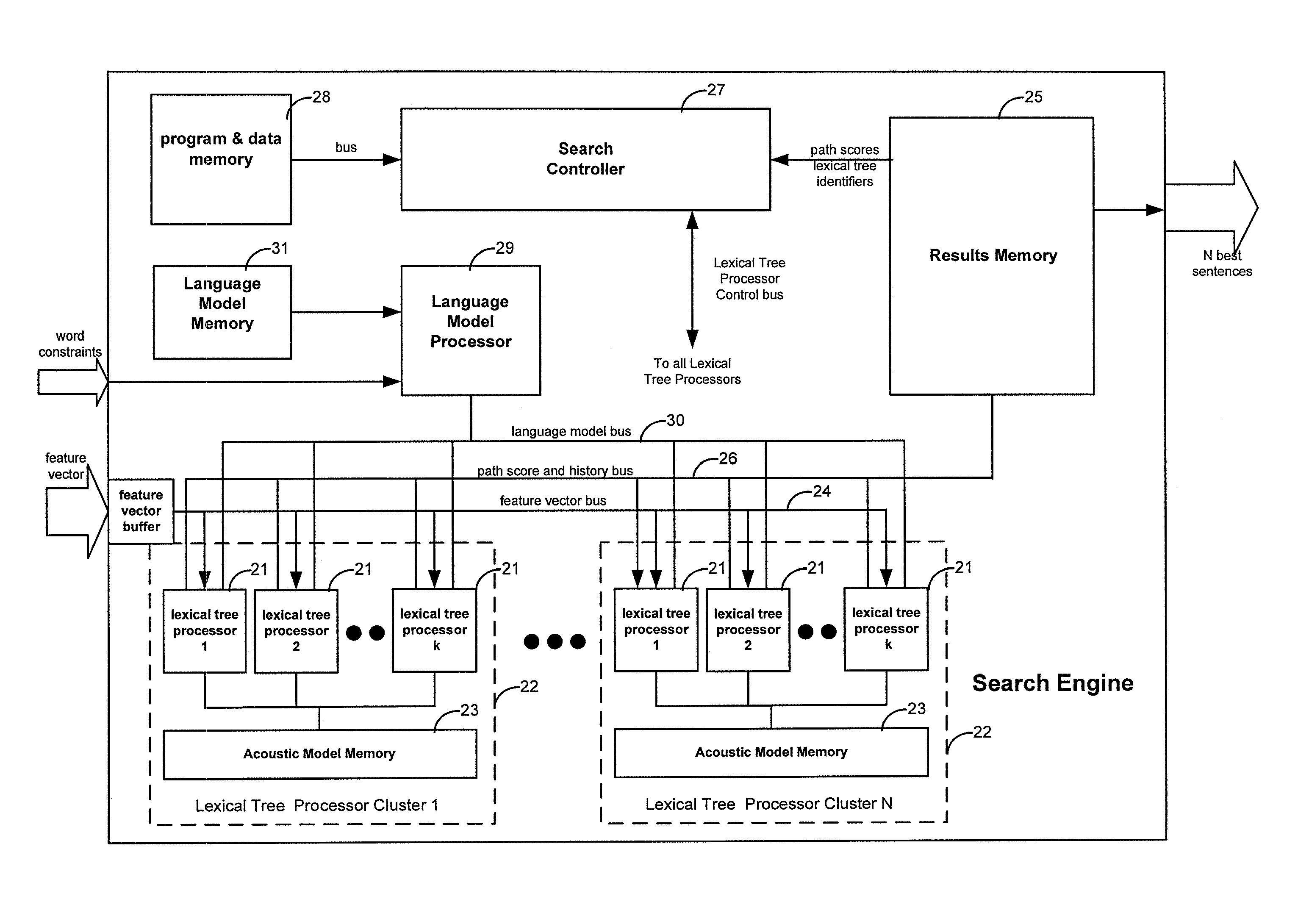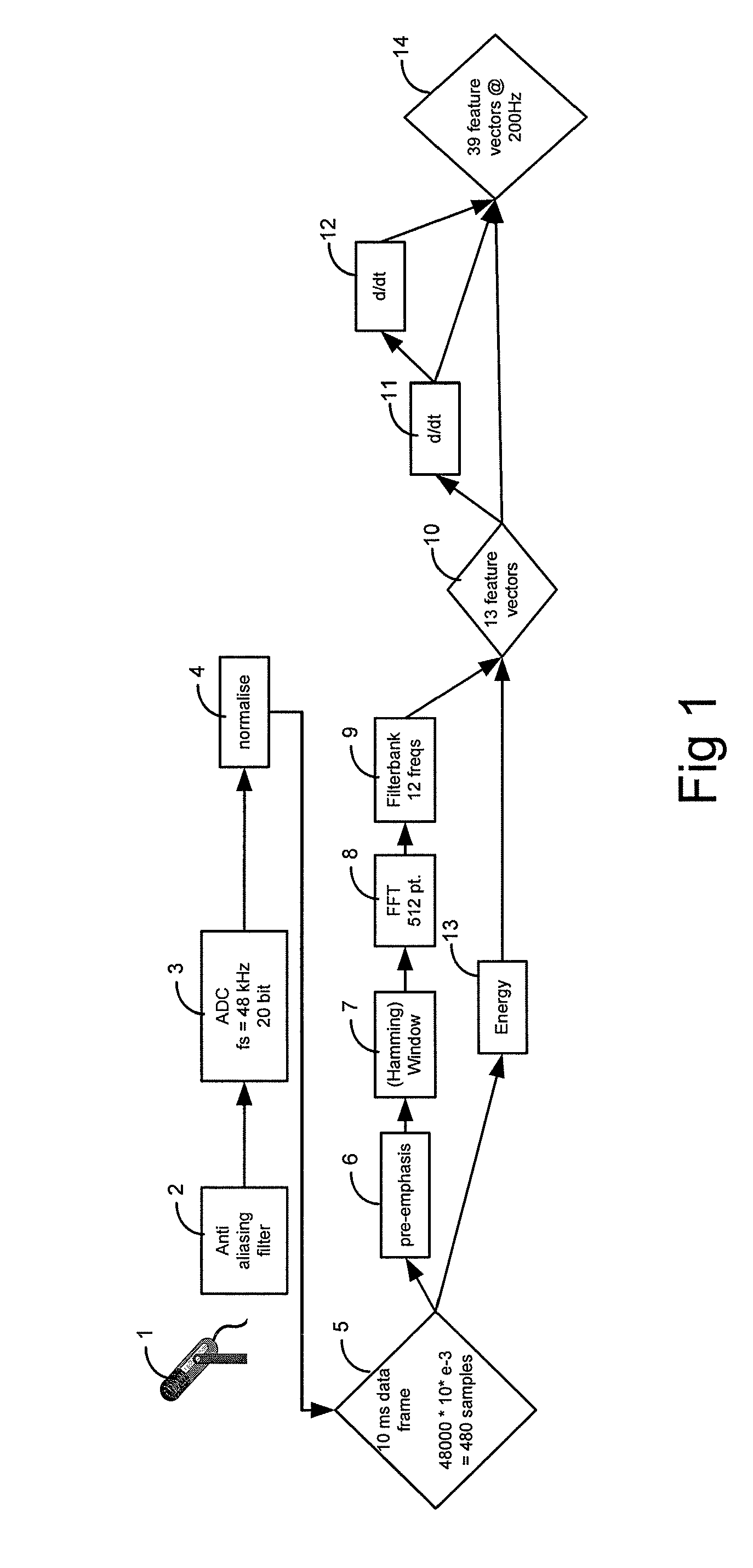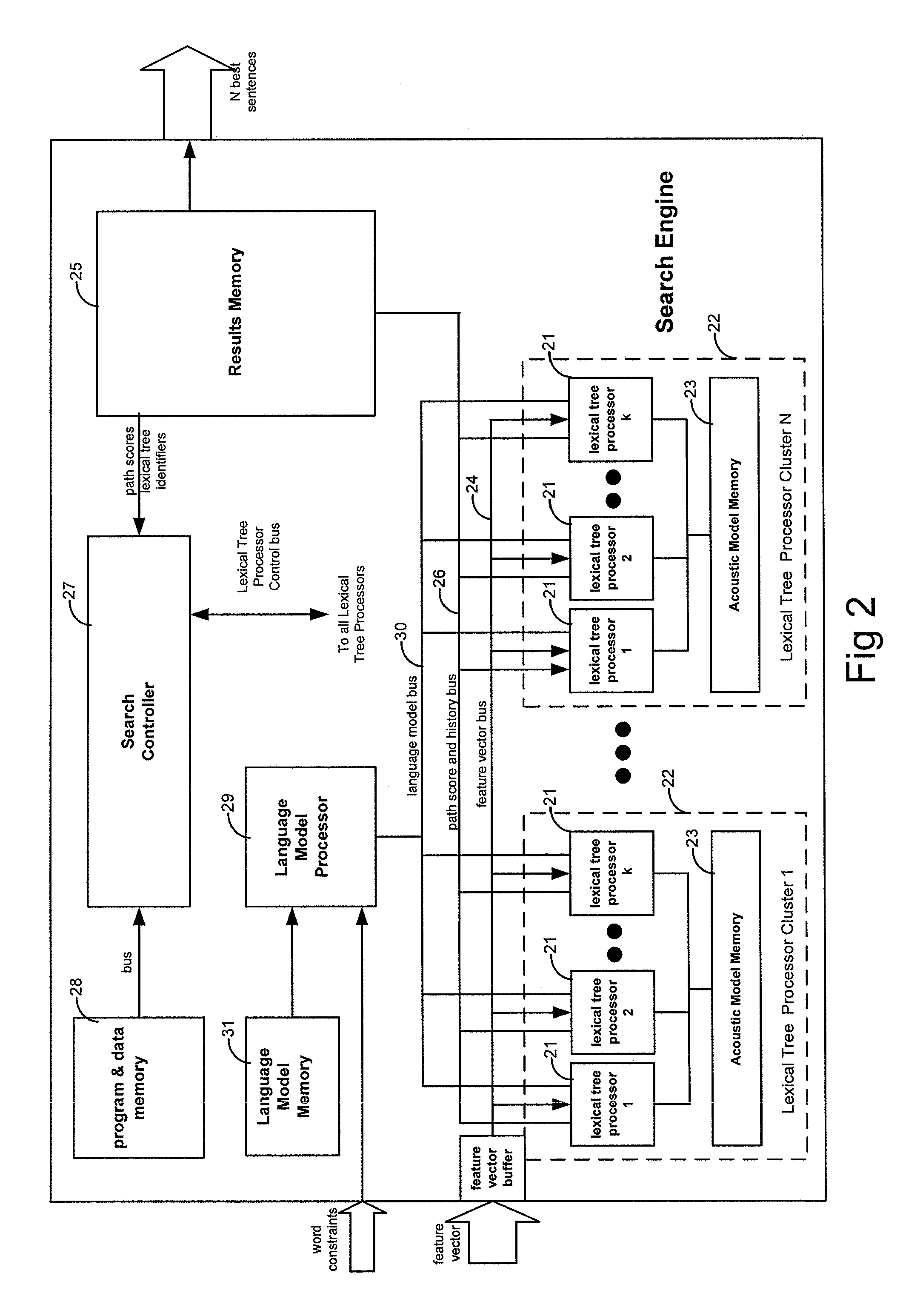Speech recognition circuit using parallel processors
a technology of parallel processors and speech recognition, applied in speech recognition, speech analysis, instruments, etc., can solve the problems of large amount of communication and synchronization between threads, high computational intensity of search, and the biggest challenge of the search process, so as to increase the accuracy, not increase the memory requirements
- Summary
- Abstract
- Description
- Claims
- Application Information
AI Technical Summary
Benefits of technology
Problems solved by technology
Method used
Image
Examples
Embodiment Construction
[0032]FIG. 1 illustrates a typical circuit for the parameterization of input speech data. In this embodiment the parameters generated are speech vectors.
[0033]A microphone 1 records speech in an analogue form and this is input through an anti-aliasing filter 2 to an analogue-to-digital converter 3 which samples the speech at 48 kHz at 20 bits per sample. The digitized output signal is normalized (4) to generated a 10 millisecond data frame every 5 milliseconds with 5 milliseconds overlap (5). A pre-emphasis operation 6 is applied to the data followed by a hamming window 7. The data is then fast Fourier transformed (FFT) using a 512 point fast Fourier transform (8) before being filtered by filter bank 9 into 12 frequencies. The energy in the data frame 5 is also recorded (13) as an additional feature and together with the 12 frequency outputs of the filter bank 9, 13 feature vectors (10) are thus produced and these are output as part of the 39 feature vectors 14. First and second der...
PUM
 Login to View More
Login to View More Abstract
Description
Claims
Application Information
 Login to View More
Login to View More - R&D
- Intellectual Property
- Life Sciences
- Materials
- Tech Scout
- Unparalleled Data Quality
- Higher Quality Content
- 60% Fewer Hallucinations
Browse by: Latest US Patents, China's latest patents, Technical Efficacy Thesaurus, Application Domain, Technology Topic, Popular Technical Reports.
© 2025 PatSnap. All rights reserved.Legal|Privacy policy|Modern Slavery Act Transparency Statement|Sitemap|About US| Contact US: help@patsnap.com



